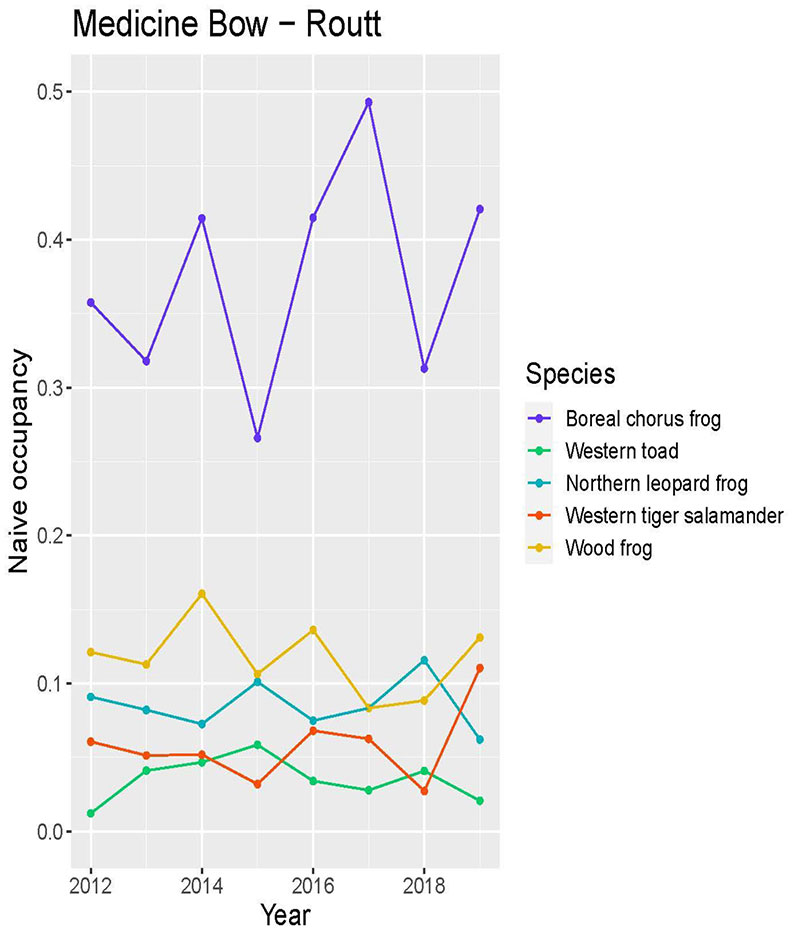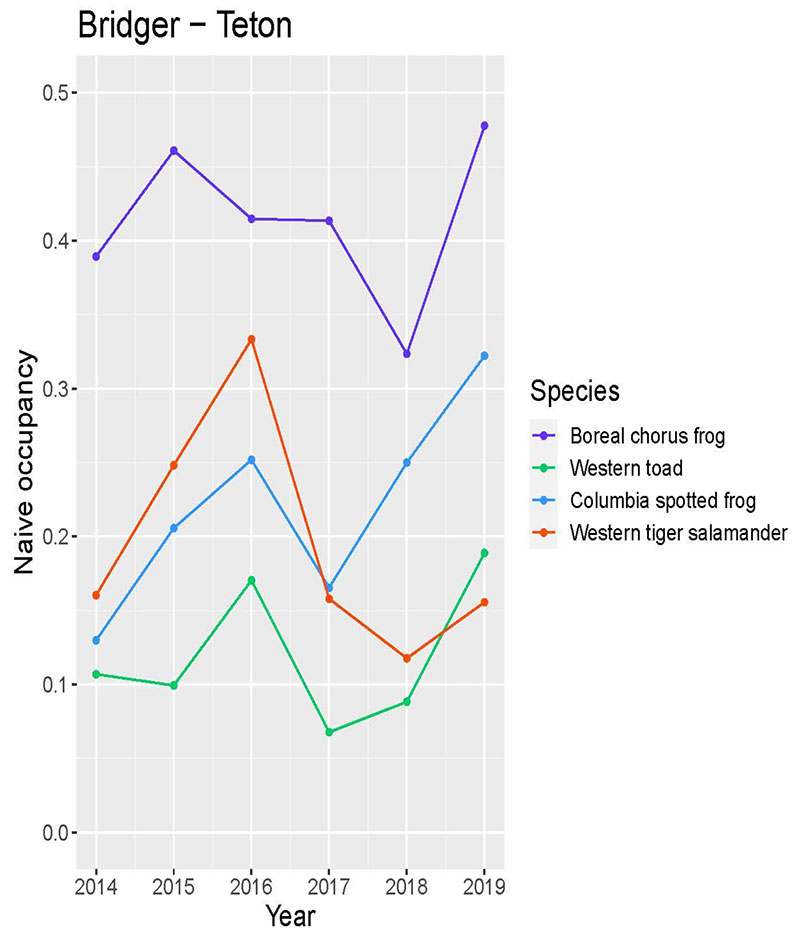Results

Project Navigation
These plots show observed trends in occupancy (the proportion of surveyed sites that are occupied) for each amphibian species in RMAP study areas. The results for both the Bridger-Teton and Medicine Bow-Routt National Forests do not show a consistent trend in species occupancy over time -- neither increasing nor decreasing -- and instead indicate that occupancy fluctuates annually for these species.


In both forests, boreal chorus frogs are the most common species, occurring in ~40% of surveyed sites. The rest of the species in the Medicine Bow-Routt NF (western toads, northern leopard frogs, western tiger salamanders, wood frogs) occupy < 15% of surveyed sites. In the Bridger-Teton NF, western toads and wester tiger salamanders appear to be more common than in the Medicine Bow-Routt NF. Columbia spotted frogs also occur in the Bridger-Teton NF, and occupy ~15-30% of surveyed sites.
However, just because a species wasn't observed during a survey doesn't mean it wasn't there! Amphibians are notoriously difficult to find because they are small and cryptic (as many of our surveyors well know!). This means that sometimes our calculations of occupancy are biased, and we need to build mathematical models that account for this potential bias to get more accurate estimates of occupancy. RMAP is currently working hard to do this -- stay tuned! For now, you can think of these results as preliminary, and that's why we call these trends 'naive' occupancy trends.
Collected data from the Rocky Mountain Amphibian Project is available to all cooperators and other interested persons.
When making a request, please describe your intended use of the data.
Results and related information for the Rocky Mountain Amphibian Project years are available for download below.


